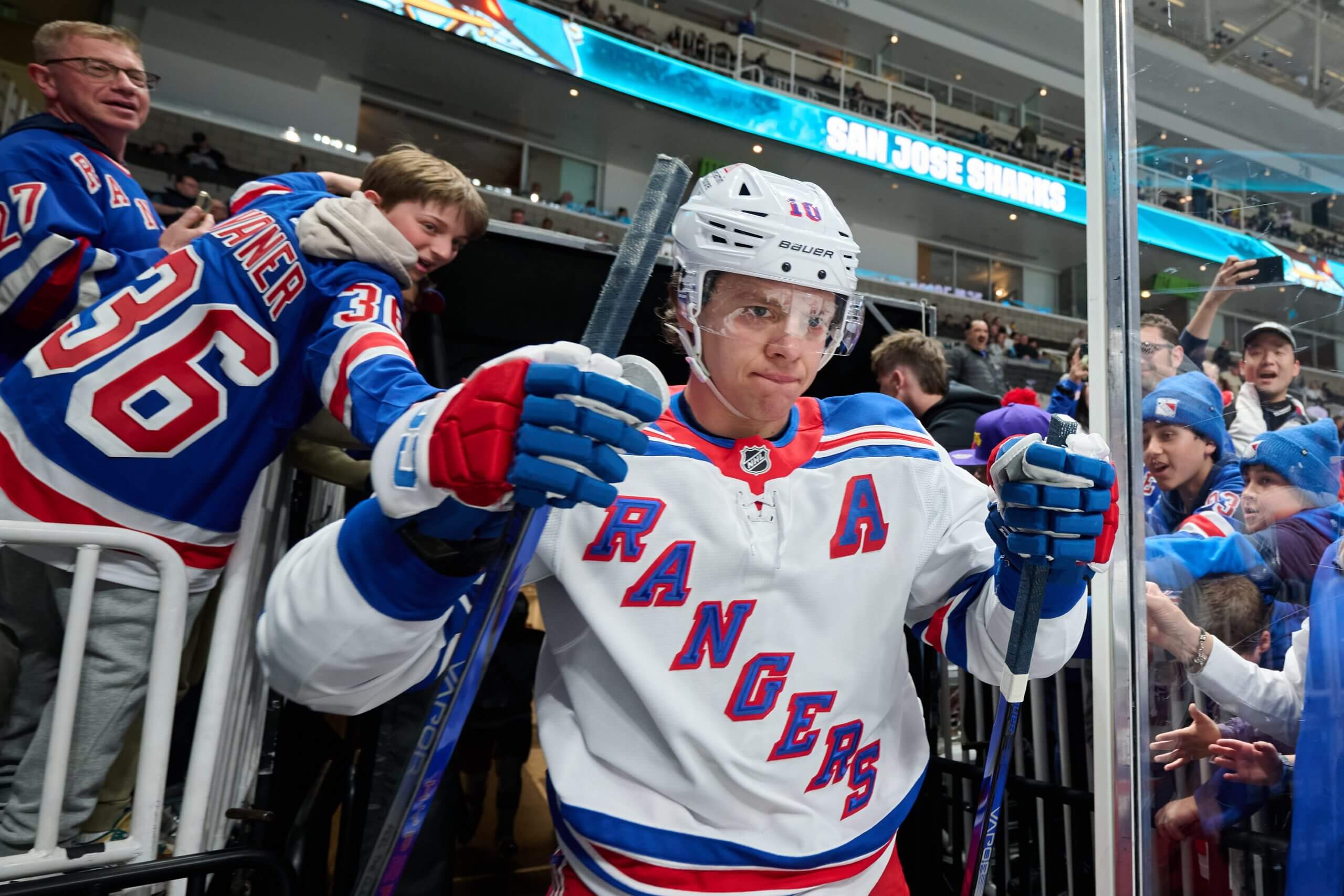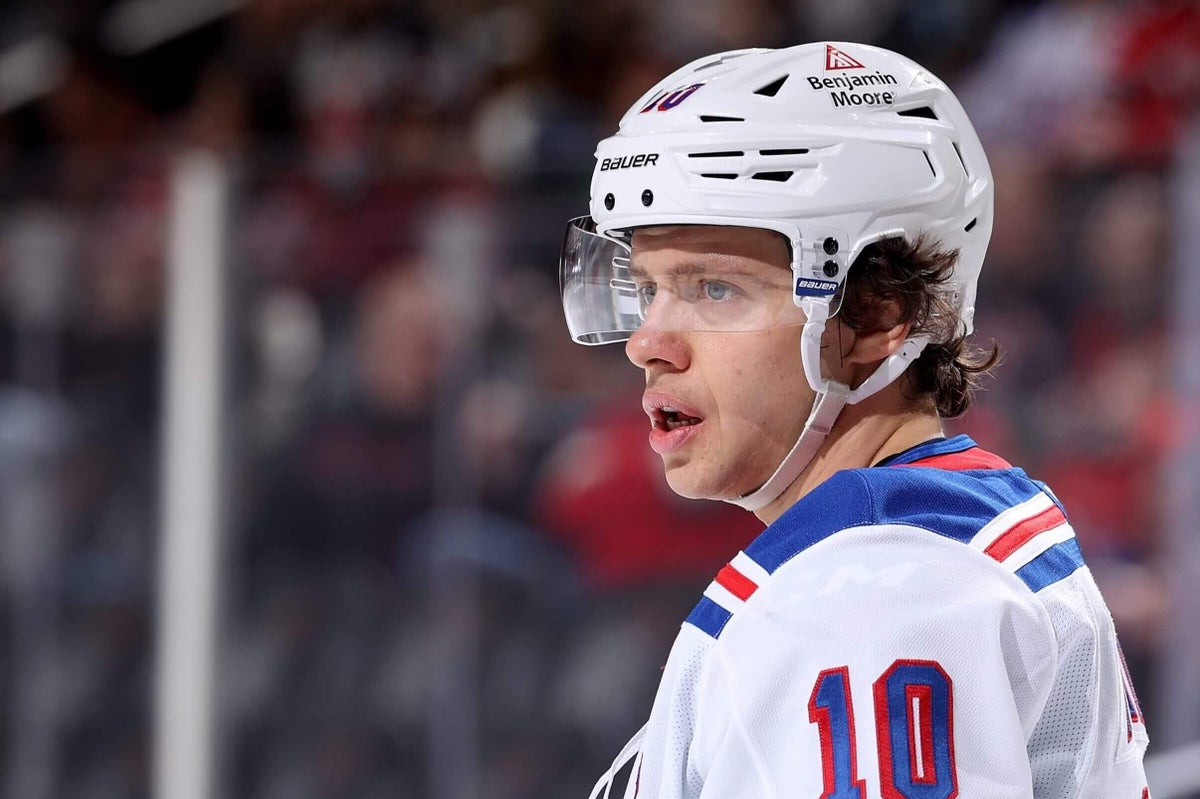TARRYTOWN, N.Y. — Artemi Panarin arrived at the MSG Training Center on Thursday sporting a sleeker look.
“I just wanted to change something,” the slumping winger said of his freshly shaved head. “Next step is a left (handed) stick for me.”
The last time the right-shooting Panarin took to the buzzer was the summer of 2023, when he showed up for training camp with a bald head and went on to post a career-high 120 points (49 goals and 71 assists) while leading the New York Rangers to their fourth Presidents’ Trophy. At this point, he’s willing to try anything to get his mojo back.
Panarin will enter Friday’s 7 p.m. game in Detroit against the Red Wings mired in a six-game stretch without a point, the longest scoring drought of his dynamic 11-year career. He’s stuck on seven points (two goals and five assists) through 14 games, with four of them coming Oct. 18 in Montreal. The Rangers’ leading scorer in each of the previous six seasons has managed only three points in the other 13 games combined.
“I need to do more,” he told The Athletic following Thursday’s practice. “That’s about confidence, too. I’ve got to play with the puck more. I watch the games after, and it’s really kind of snowballed. I missed training camp, had a couple (injury) issues. I wasn’t feeling right from a conditioning standpoint in the first couple games. I started getting frustrated right away, and then it kind of goes into the contract and all that stuff in my head.”
Now in the final season of a seven-year, $81.5 million contract that made him the prize of the 2019 offseason, Panarin admitted the uncertainty surrounding his future is weighing on him. He didn’t want to use that as an excuse for his sinking production.
“I can’t say I’m thinking about that in the game,” he said, but added “sometimes I think” it could be a factor.
Panarin would like to stay in New York, but he’s not sure where the Rangers stand as it pertains to that question. There have been brief negotiations, but they’ve stalled lately.
“They’ve talked,” he said of Rangers team president Chris Drury and his agent, Paul Theofanous. “But not much right now.”
It’s hard to ignore when Panarin’s name seems to pop up on the rumor mill every other day. The interest is understandable given his star power and pending free agency, but any prediction at this early stage is largely speculative.
Theofanous did not immediately respond to an inquiry from The Athletic and Drury has a policy of declining comment on contract negotiations. All that’s certain is what we reported in the preseason and have maintained through the first month of the season: The Rangers are in no rush to make a commitment. The only exception would be a short-term deal with a team-friendly average annual value, but there’s been no indication that Panarin is looking to provide the type of discount that would tempt them.
There are a few reasons for the Rangers’ prudence, starting with their desire to maintain salary cap flexibility. Drury’s spending power was limited in his first four seasons at the helm, but New York is projected to have over $30 million in cap space heading into next summer. He doesn’t want to commit a large chunk of that money until the market materializes and all options are weighed.

Artemi Panarin is in a six-game stretch without a point, the longest scoring drought of his 11-year career. (Robert Edwards / USA Today Network via Imagn Images)
Also consider that the NHL trade deadline is still four months away. There’s a lot of hockey to be played between now and March 6, with Rangers’ brass waiting to see where the team stands as we get closer to that key date. If they’re in the thick of the playoff race, the odds of Panarin sticking around would seemingly increase. But if the Rangers are stumbling and Drury determines more changes are needed, the possibility of entertaining trade offers for one of his biggest assets can’t be ruled out.
And, of course, Panarin’s performance will be a major factor. Can his early-season struggles be chalked up to contract distractions? Lingering injuries from training camp? Age and general decline after turning 34 last week? Or a combination of all three? The Rangers have the next few months to sort all of that out and determine the best path forward.
“We’re trying to help him work through some of the challenges,” said coach Mike Sullivan, who shifted Panarin to yet another new line with Mika Zibanejad and Taylor Raddysh for Thursday’s practice.
Panarin insisted he’s up to speed after missing the entire preseason, saying, “I feel good” from a physical standpoint. To him, the key is getting back into the right headspace.
“It’s a little harder every game, but when you start being too sad, it doesn’t help,” he said. “It just makes it worse. So I’m trying to treat every game like a new game, a new page.”
The underlying numbers continue to look good. Panarin’s 59.08 percent expected goals-for rate ranks second among New York forwards, according to Natural Stat Trick, but his actual production tells a much different story. The 6-foot, 176-pounder is tied for 12th on the team with only four individual high-danger scoring chances at five-on-five, an indication that he isn’t getting to the hot spots on the ice consistently enough. Compare his current average of 0.29 iHDCF per game to the 0.68 registered in his standout 2023-24 season.
But it’s not just about a dramatic drop in goals. When Panarin’s at his best, he’s a magician with the puck on his stick. His elite vision and passing are his biggest strengths, but those moments have been far less frequent this season.
Sullivan pushed back on the notion that his straight-ahead system, which is predicated on controlling territory with an aggressive forecheck, has taken the puck out of Panarin’s hands or hindered his playmaking.
“We’re giving him the latitude to make the plays through the neutral zone that he needs to make,” the coach said. “If he wants to keep it, he can keep it. Are we trying to play a north-south game? Yes, but by no means does that mean we’re a dump-and-chase team. That’s not what we’re trying to be as a team. [Panarin] has the latitude to make the plays when they’re there. What we don’t want is reckless hockey if the plays aren’t there, and then we’re forcing plays and we’re feeding the teams and opponent’s transition game. That’s where we’ve got to make good choices.
“I’ve tried to do my best to stay out of his way offensively and allow him to do his thing.”
Sullivan stressed that he’s seen signs of Panarin’s game improving. But he also noted how much the Rangers rely on him to generate points, with his lack of production being one of the primary issues for a sputtering attack. Entering play Thursday, New York ranked 30th in the league with an average of 1.5 five-on-five goals per game and last with an 11.1 percent success rate (4-for-36) on the power play.
The power play has gone five straight games without a goal, which Panarin believes has affected the team’s confidence in all situations.
“That’s the thing that gives you extra juice,” he said. “If you have a couple points on the PP, then you feel better at five-on-five after.”
Sullivan implemented a change to the top PP unit on Thursday, removing Alexis Lafrenière while installing 6-foot-3 Will Cuylle at the net-front position.
“We’ll see if it works,” Panarin said.
He and the Rangers are fishing for anything that might ease the pressure and unlock the offense, whether it’s lineup changes, contract-year motivation or a new haircut.
“It’s not an easy time, but I can’t be frustrated,” Panarin said. “I’ve been in a similar situation – never like this – but it’s the same tools, right? I’ve gotten past this thing by just keep working and trying to be mentally in the right spot… There’s only one way to win this battle.”

